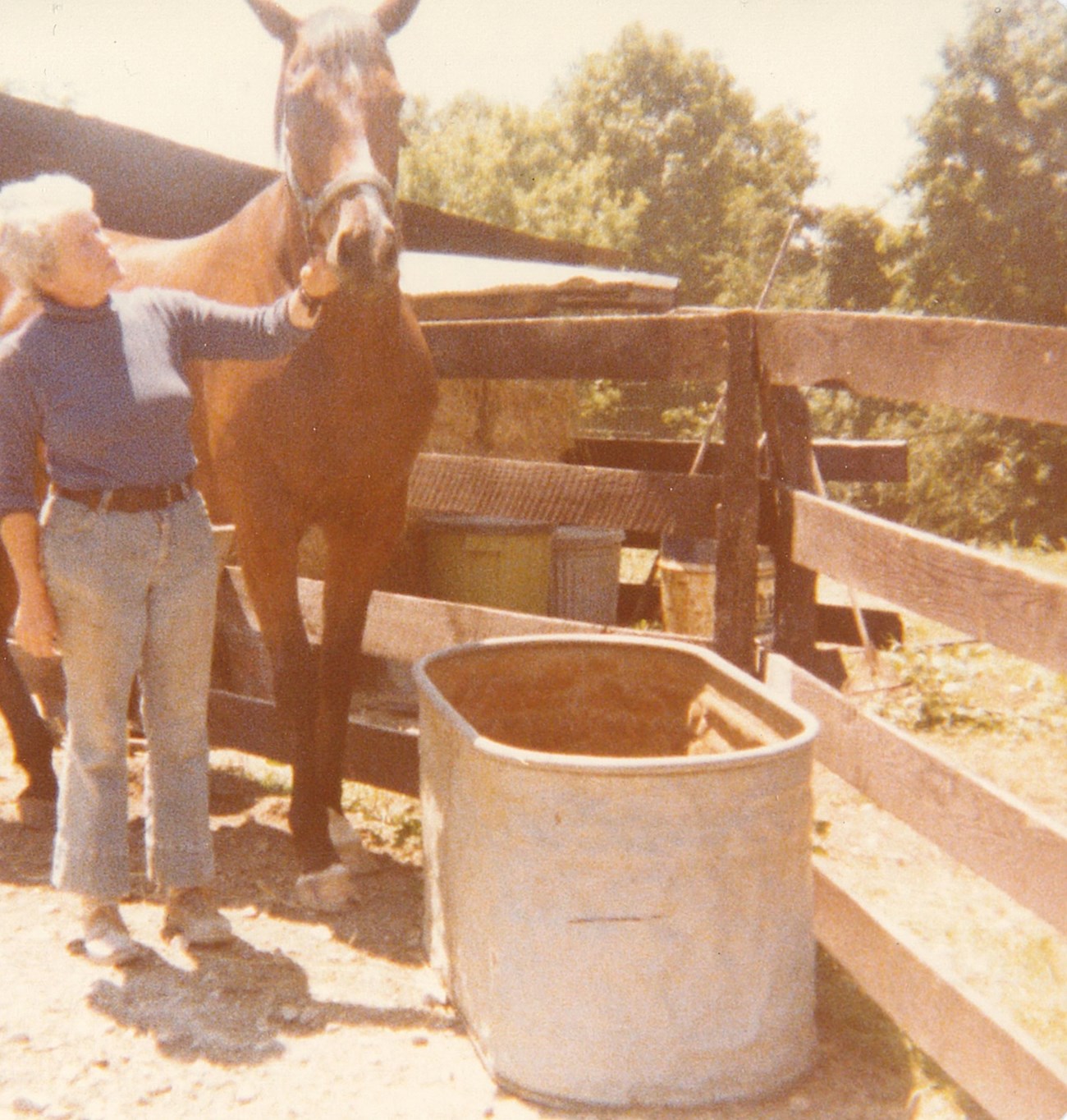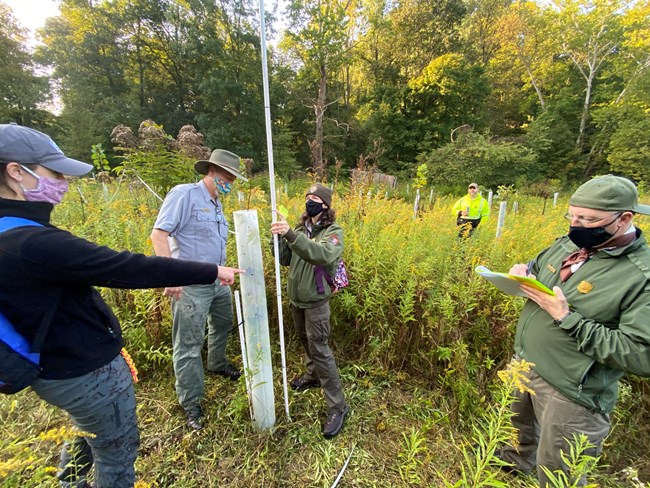Last updated: May 27, 2022
Article
The Pittengers' Conservation Legacy at Wetmore

Peninsula Library & Historical Society
For one Akron couple, vacations near Peninsula, Ohio turned into a love affair with the land. In 1958 Tress and Aldah “Peggy” Pittenger bought a summer home on Quick Road, across from Armington Pond. Their family enjoyed it so much that they sold their city home to begin their life in the countryside. While Tress worked as an attorney, Peggy developed their property into a successful horse breeding business.

Peninsula Library & Historical Society
Managing the Blackacre Farm
The family dubbed their property Blackacre Farm, after a placeholder term commonly used by professors to teach real estate law. Peggy oversaw daily operations while Tress handled finances, maintenance, engineering, and timber harvesting. As their business grew, the Pittengers expanded Blackacre in 1968 by purchasing an adjacent small farm. (This is where the Wetmore Trailhead is today.) Peggy became known for breeding Morgans and Thoroughbreds, and writing popular books about how to raise a horse. Some of their stock had winning racing careers. Their colt Burglary was named Ohio Horse of the Year in 1974.
While Peggy’s success is better remembered, park scientists are gaining a new appreciation for Tress’s careful land management. Tress followed many best practices. For example, he only cleared forest for pasture in flat areas, not on slopes which are prone to erosion. In these fields, he dug large basins to collect rainwater for the horses. When pasture became overgrown with unwanted plants, Tress used penned goats instead of pesticides to clear the area. On hillsides too steep for grazing, he planted native trees such as fast-growing evergreens and locusts that would hold the soil in place. He also strategically felled larger trees to provide more sunlight to smaller ones. Tress’s careful decisions showed his dedication to responsibly using his family’s land.
Community Ties
Blackacre Farm relied on its community in many ways. The Pittengers offered housing to their permanent staff, and hired high school and college students in summer. Tress sought engineering advice from his mechanically inclined colleagues at General Tire. Neighbors Fred and Phillip Urbank operated the farm’s sawmill. (Listen to Phillip Urbank’s memories, recorded as a 2011 oral history.) The youngest of the three children, David Pittenger describes the kinship in Peninsula’s farming community:
“Farms exist in communities and there was an attitude of collaboration among local residents. During the summer, neighbors would help each other bale and store hay. Neighbors who helped maintain the sawmill could then use it to mill logs for their own use. Whenever someone was ill, there was a neighbor who would help with chores.”
Blackacre Farm was so welcoming that even Peninsula’s stray cats and dogs were given a home there. (Fittingly, the national park leased this property to the Humane Society of Summit County before their Twinsburg facility opened.)
For family photos and more memories, visit David’s Blackacre history page.

NPS / Danielle Bauer
Continuing the Legacy
The spirit of Blackacre Farm lives on in recent efforts to restore habitat near the Wetmore Trail. The National Park Service and the Conservancy for Cuyahoga Valley National Park have teamed up to slow storm water flowing into Dickerson Run and on to the Cuyahoga River. Volunteers and staff have already planted thousands of trees at Wetmore. Youth and adults from local schools, businesses, community groups, and Cuyahoga Valley Environmental Education Center have made such a large-scale project possible. We are turning fields back into forest and installing “green” infrastructure such as sand-seepage berms with cobblestone riffles. As climate change leads to more intense and frequent storms, this work will help protect human and natural communities downstream.
Learn more and watch our progress as we add to the Wetmore photo gallery.

NPS / Mallory Klein
